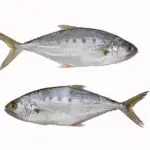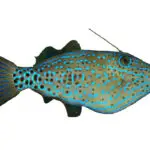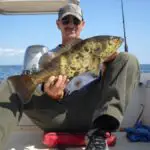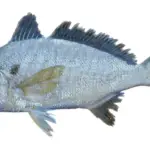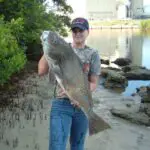Sand trout, otherwise known as “Sandies” or “Sand Weakfish” are an easy fish to catch, and due to their abundant numbers, they’re great for filling the cooler.
But are sand trout any good to eat?
Table of Contents
- Are Sand Trout Good To Eat?
- What Does Sand Trout Taste Like?
- How Do You Cook Sand Trout?
- Frequently Asked Questions
- Conclusion
- Related Posts
Are Sand Trout Good To Eat?
Sand trout are a mild and soft textured fish, very similar to the spotted sea trout. Although they are not known for their table fare, sand trout are good to eat when fresh (NOT frozen) and in most cases, they are unregulated and can be caught in large quantities.
As you read, you will find out the best way to eat sand trout and other species that are similar to them.
What Does Sand Trout Taste Like?
The taste of sand trout is generally described as mild and flaky, with a semi-firm texture. It can be prepared in a variety of ways, making the flavor profile change under different circumstances.
The flavor can be heavily influenced by the method of preparation and the spices or marinades used.
Some people claim that sand trout have a more delicate and sweet flavor compared to other types of fish, such as redfish or spotted sea trout.
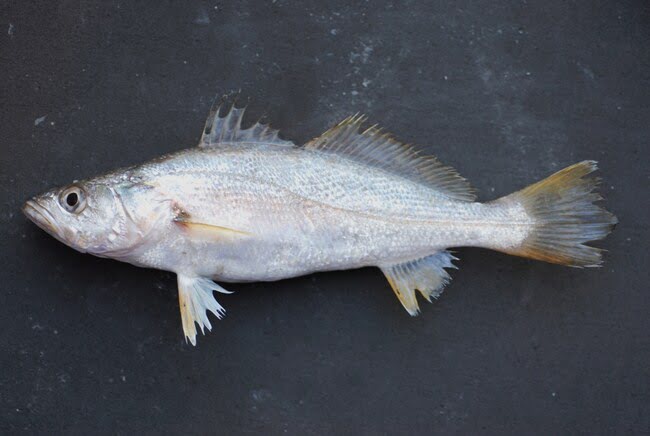
Nutrition Facts
Sand trout are a good source of protein and contain several essential nutrients, including omega-3 fatty acids, vitamins, and minerals.
A 3-ounce serving of cooked sand trout provides around 21 grams of protein and only 110 calories. It is also a rich source of vitamin B12, niacin, and selenium.
How Do You Cook Sand Trout?
Sand trout, also known as sandies, weakfish or white trout, are good any way you want to prepare them. Some options to cook sand trout include:
- On the grill
- In the oven
- Pan-fried or Deep Fried
- Smoker
The size and thickness of the sand trout may play a factor in cooking times. Using a meat thermometer is important when cooking fish, as it helps to ensure that the internal temperature reaches the appropriate level to destroy any harmful bacteria.
Cook your sand trout until the internal temperature is 145 degrees, as this is crucial to preventing foodborne illness.
Here are some general guidelines for preparing sand trout:
Grilling
Preheat the grill to medium-high heat. Season the sand trout with your desired spices and brush both sides with oil to prevent sticking.
Grill for four to six minutes on each side, or until they are done enough to easily flake with a fork.
Baking
Preheat the oven to 400°F. Place the sand trout in a greased baking dish and season with your desired spices.
Bake the sand trout for roughly 10 to 12 minutes, or until you notice that it should flake easily.
Frying
Heat a couple of inches of oil in a large, deep saucepan or Dutch oven to 350°F.
Season the sand trout with your desired spices and coat it with flour or breadcrumbs.
Carefully place the sand trout in the hot oil and fry for four to six minutes on each side, or until the flesh is opaque and flakes easily.
Smoking
When smoking sand trout, you should soak wood chips in water for at least 30 minutes. Then, preheat the smoker to 225°F.
Place the soaked wood chips on the hot coals or in the designated area for wood chips in your smoker.
Season the sand trout with your desired spices and place it on the smoker rack. Smoke the sand trout for one to 1.5 hours, or until the internal temperature reaches 145°F.
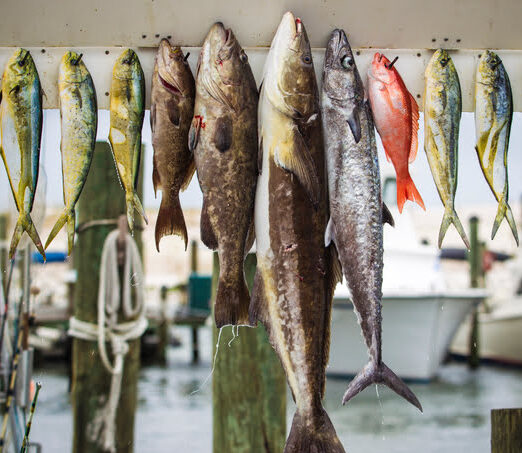
Do You Love Seafood?
Frequently Asked Questions
Where do you find sand trout?
They are native to the Gulf of Mexico and the western Atlantic Ocean and are commonly found in shallow coastal waters, estuaries, and bays.
They tend to prefer areas with sandy or muddy bottoms and are often found near seagrass beds, jetties, and oyster reefs.
Sand trout are most commonly found in the Gulf states, including Texas, Louisiana, Mississippi, Alabama, and Florida.
Can you freeze sand trout?
Sand trout do not hold up well in the freezer and tend to become mushy when thawed. As a result, it is not recommended to keep them unless you plan to eat them within the next two days.
Pro Tip: Add a teaspoon of real lemon juice to your filets to keep the meat firm, moist, and flavorful.
It is crucial to carefully consider the appropriate course of action when deciding how to manage sand trout after successfully capturing them.
Catching too many would not be beneficial, as you would likely waste them unless you plan to use them as bait.
Are sand trout good for bait?
Sand trout can be a tasty dinner option, and other species of fish think so too.
They can be used as bait when offshore fishing or at various locations for different kinds of fish species, including redfish, sea trout, flounder, and drum.
Sand trout are often used as live bait, as their movement and scent can be attractive to predatory fish. They can also be cut into small chunks and used as cut bait.
Conclusion
So are sand trout good to eat? They have proven to be a good choice for dinner if prepared properly.
Remember to store it in icy water immediately after you catch them and cook it on the same day for the best flavor and quality. Bon appetite!

Growing up in Florida, I’ve been surrounded by saltwater my entire life…and I love sharing my passion with others.
To learn more about why I started Saltwater Mecca, visit the ABOUT page.
Thank you for reading this article. Browse around & have some fun!

